Not much is left of St John the Evangelist Church in Wapping. It dates from the middle of the eighteenth century but did not survive World War Two. A bomb landed on it and left only the tower standing and a handful of tombs in the yard across the road. (There is a great description of war-time Wapping including the freshly bombed church here according to which the church tower was intended for demolition too.)
You can see what is left of the church to the left of the picture below. To the right of the picture is the St John’s Old School.
What remains of the church and the school, which is now turned into private houses, stands on the east side of Scandrett Street, across the leafy grounds of the churchyard that now make a pleasant garden.
The school is in two parts. The first building, dated 1760, includes what must be a lovely roof terrace and two notable statues in front of it.
You can see from this close up that the school itself pre-dated the building by several decades, having been founded in 1695. There is a fine explanation of the school and the statues here and I borrow a section: “The costumes worn by the students are typical of the “blue coats” worn at charity schools (blue was apparently the cheapest dye) which were created for orphan children so they could be cared for and trained in the skills they would need to work in domestic service. Boys and girls were segregated and you can see the separate entrances for them on this building’s facade. The ‘model students’, some of the best on display in London, are made of Coade stone.”
The other part of the school is as lovely and dates from the same period. The entrance signs for boys and infants remain.
A close up of the infants’ door with lovely carving above it:
The churchyard has become a kind of Square, surrounded by Scandrett Street in the north and the east, Pier Head in the west and Wapping High Street along its south side, where the famous Town of Ramsgate pub sits and its alley, Wapping Old Stairs, leads down to the murky Thames.
And in the north-eastern corner is this old Taylor Walker pub, proud and still standing.
I think it’s one of London’s loveliest squares.
An interesting addendum to this post is the chapter I found about the church and the school in Geoffrey Fletcher’s 1963 book City Sights :
“The church was damaged severely in the last war and never rebuilt. The tower has recently been repaired and restored; the school house (with its delightful statues of charity children concealed behind the protecting corrugated iron) awaits restoration. There is hope of a rescue operation: at the moment, however, the school is in a ruinous condition. St. John’s Wapping was built about the middle of the eighteenth century by Joel Johnson, and is a most interesting example of London Baroque. Visit it and inhale the river air, scented with the spices of the great grim warehouses, after which take refreshment at The Town of Ramsgate. Boswell acted on Dr Johnson’s recommendation to explore Wapping. but found it disappointing.”
Sadly the warehouses are gone or, at best, converted to houses, but certainly the smell of spices is no longer in the Wapping air. Here is the sketch that accompanied the chapter. It’s from almost the same angle as the first photo, above, and shows the corrugated iron covering the statues of the boy and girl :
In the background there is a crane; restoration or redevelopment is close.
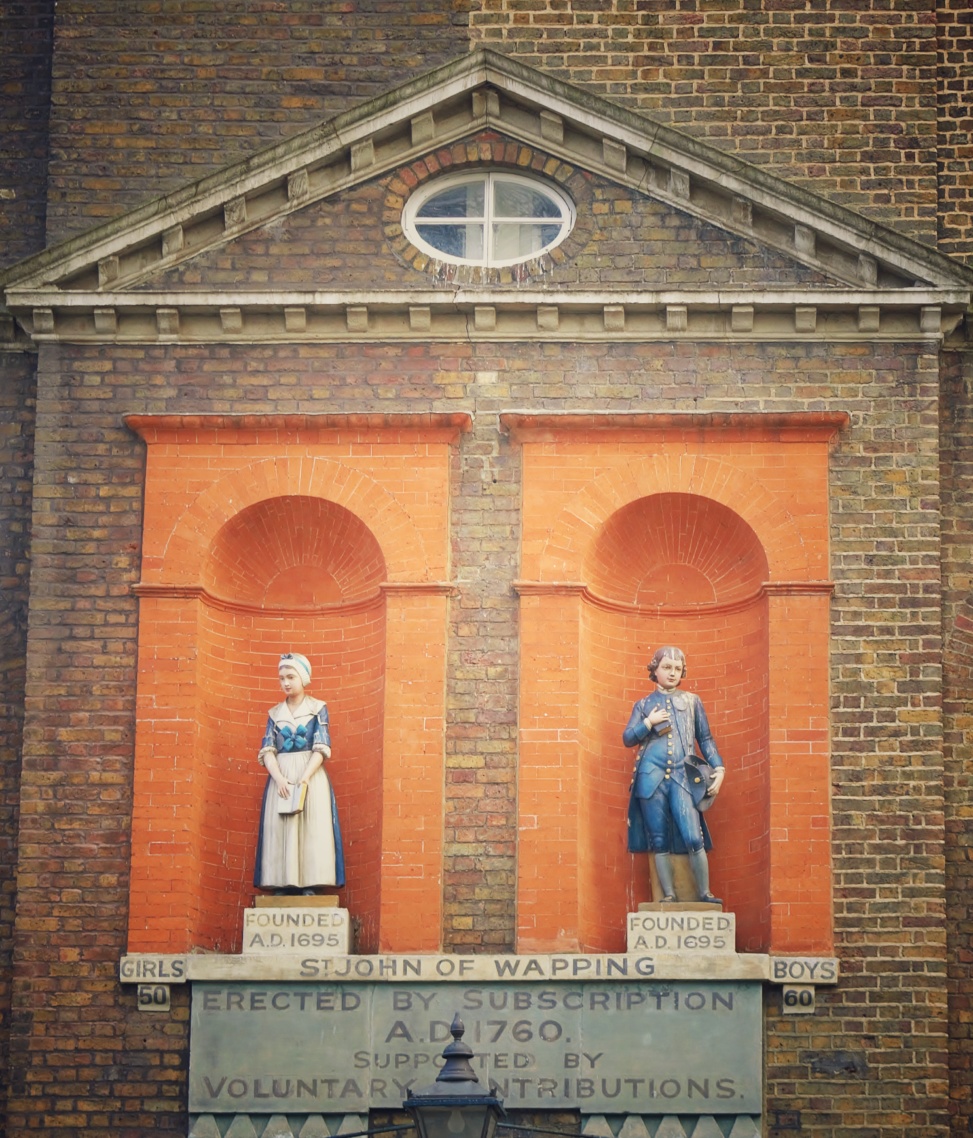
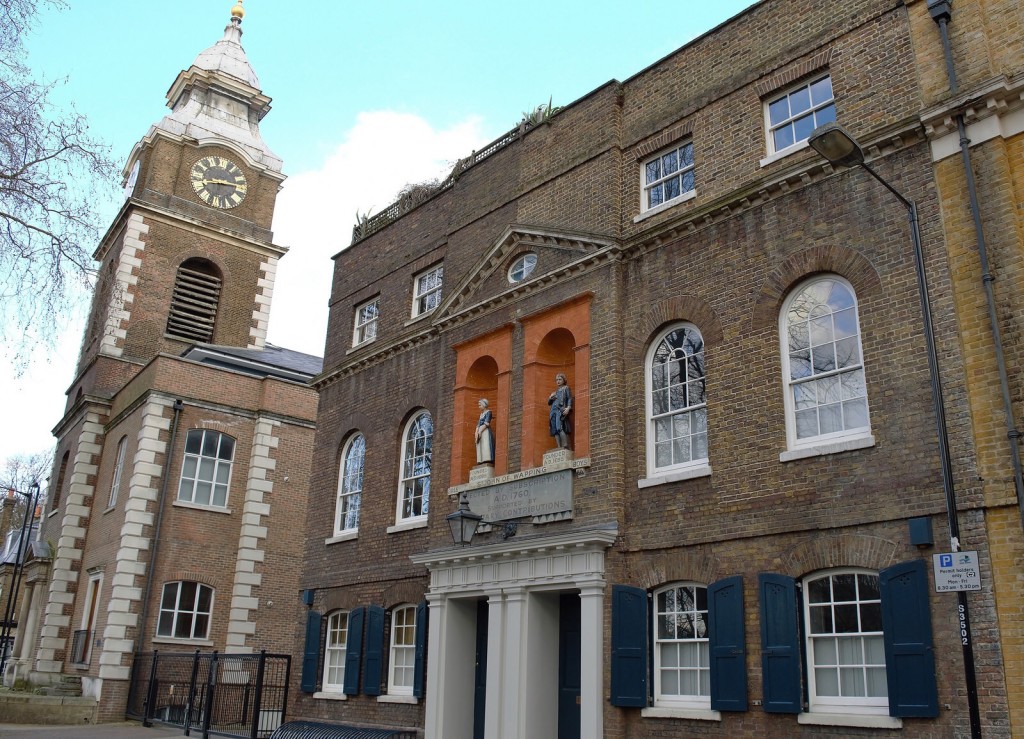
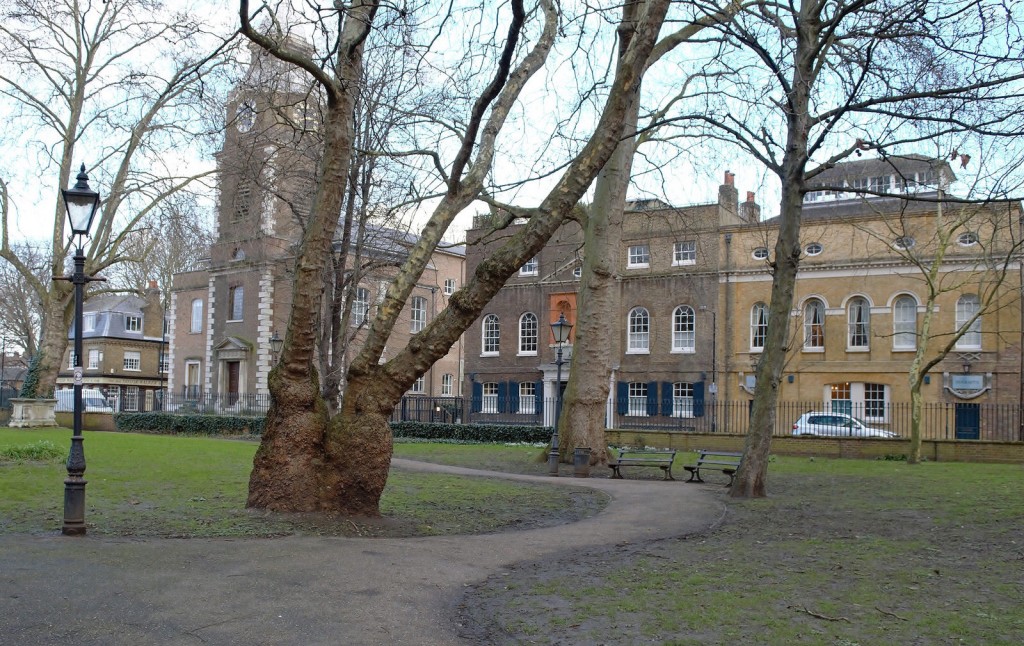
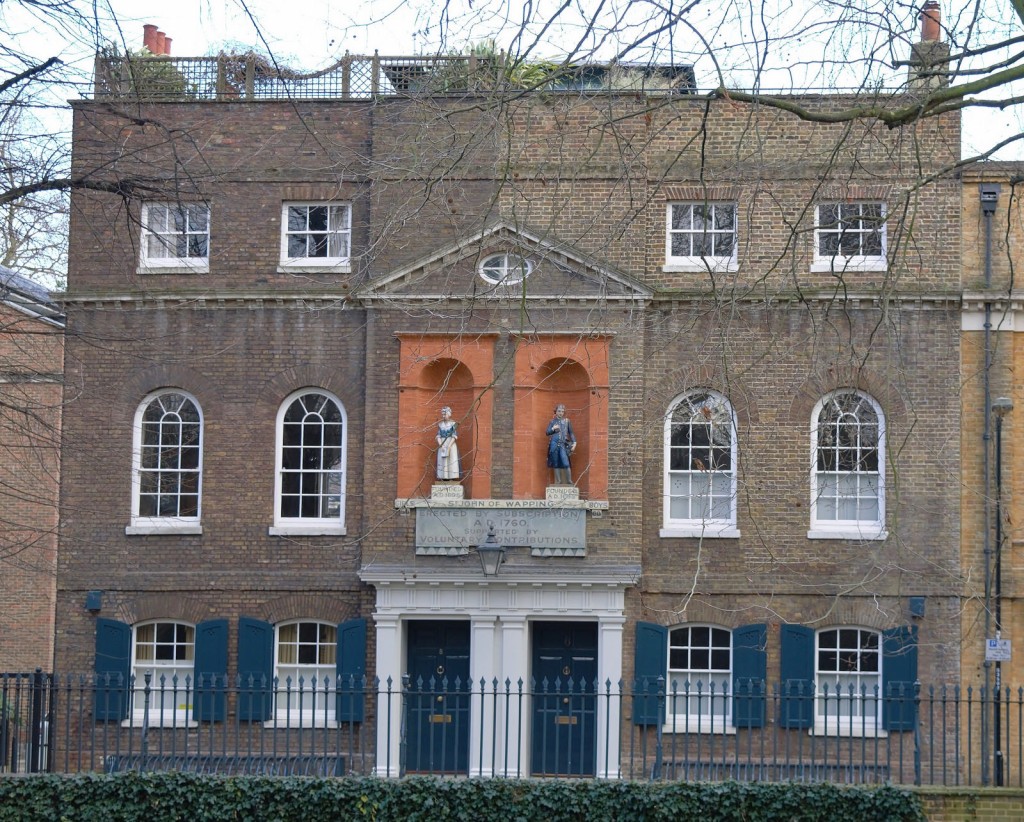
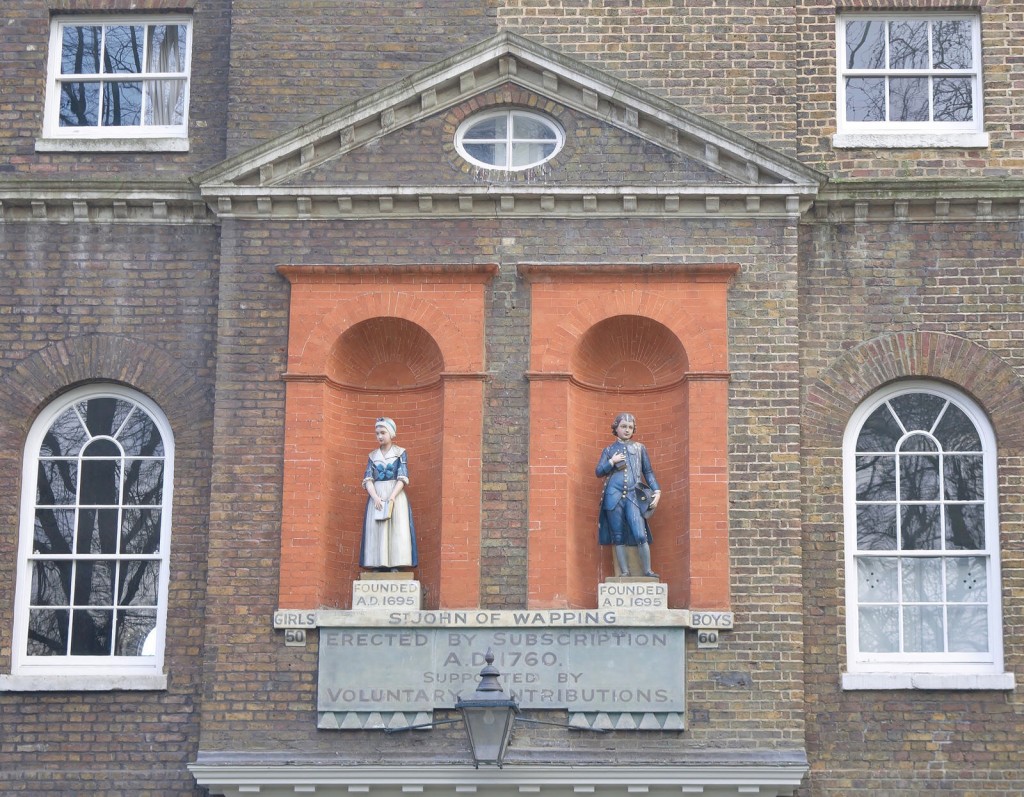
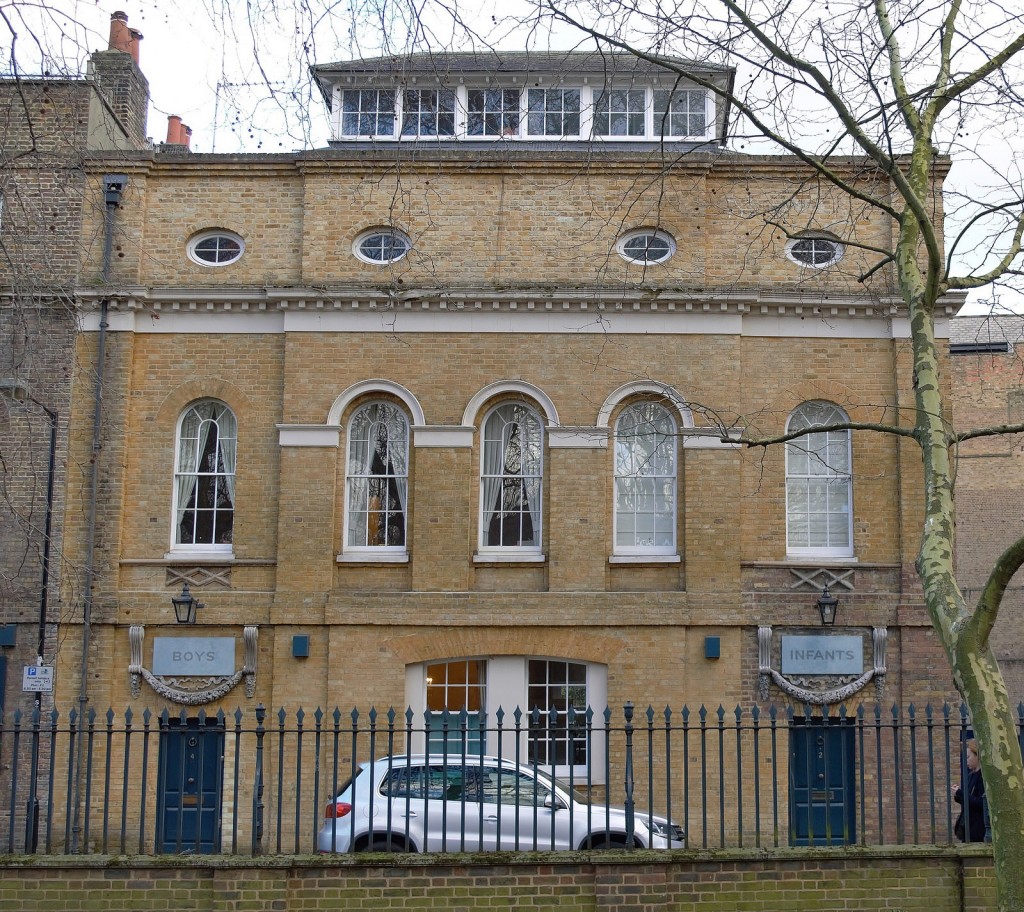
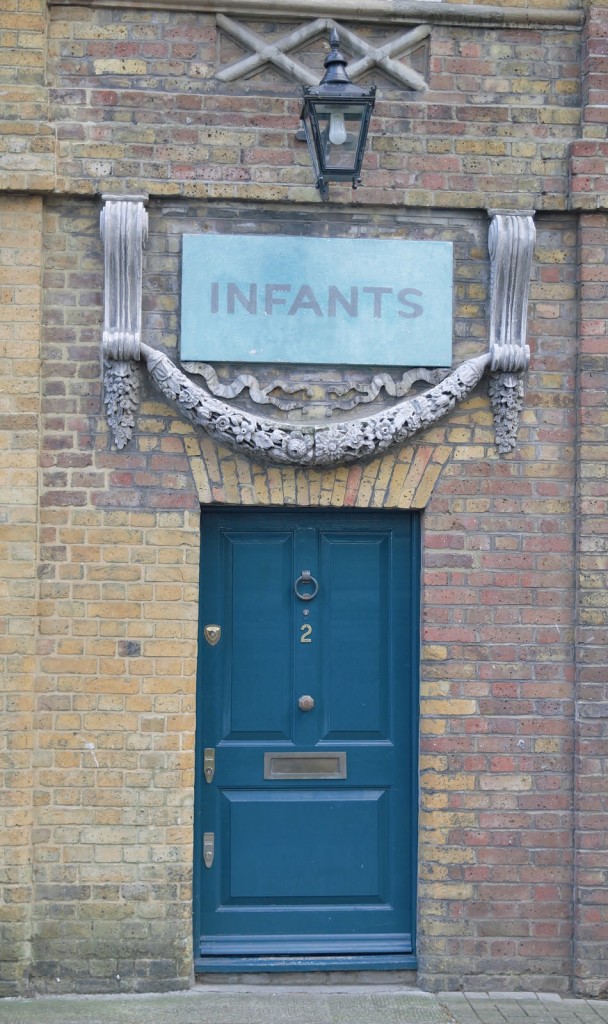
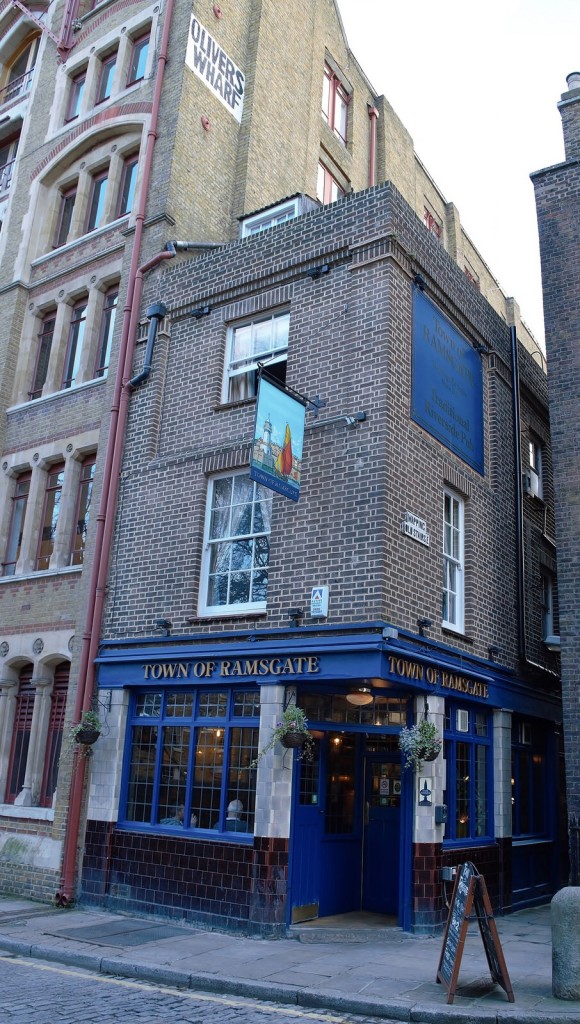
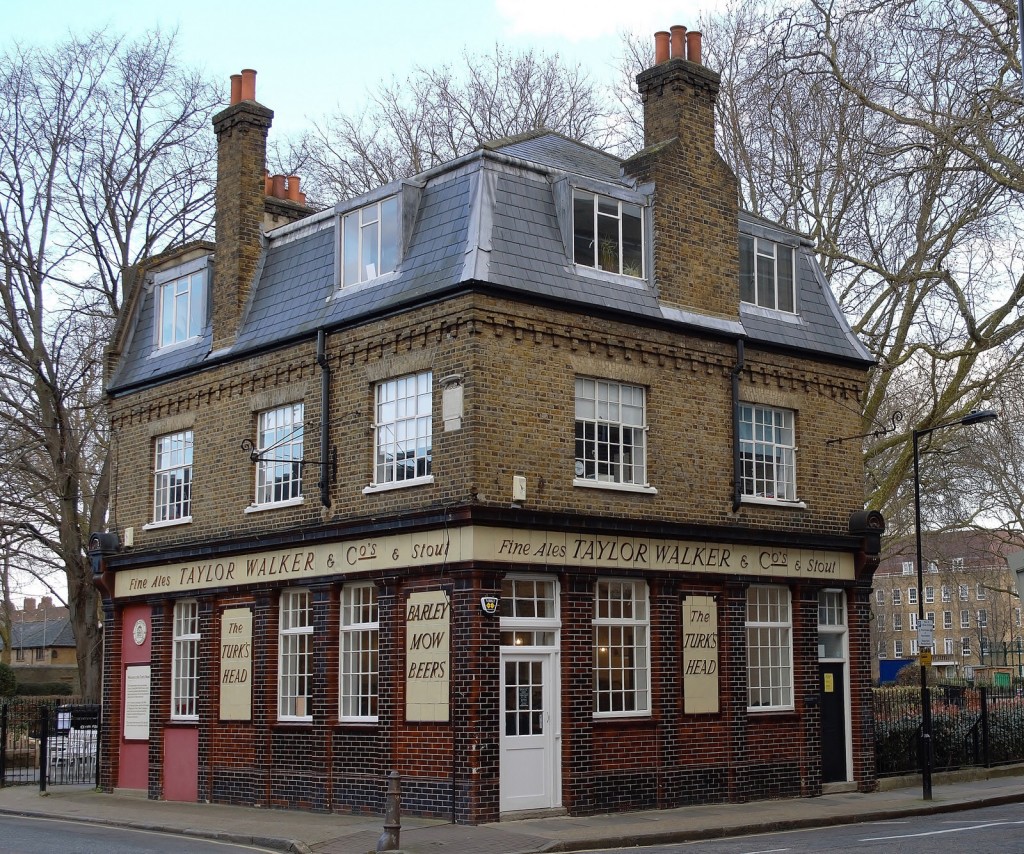
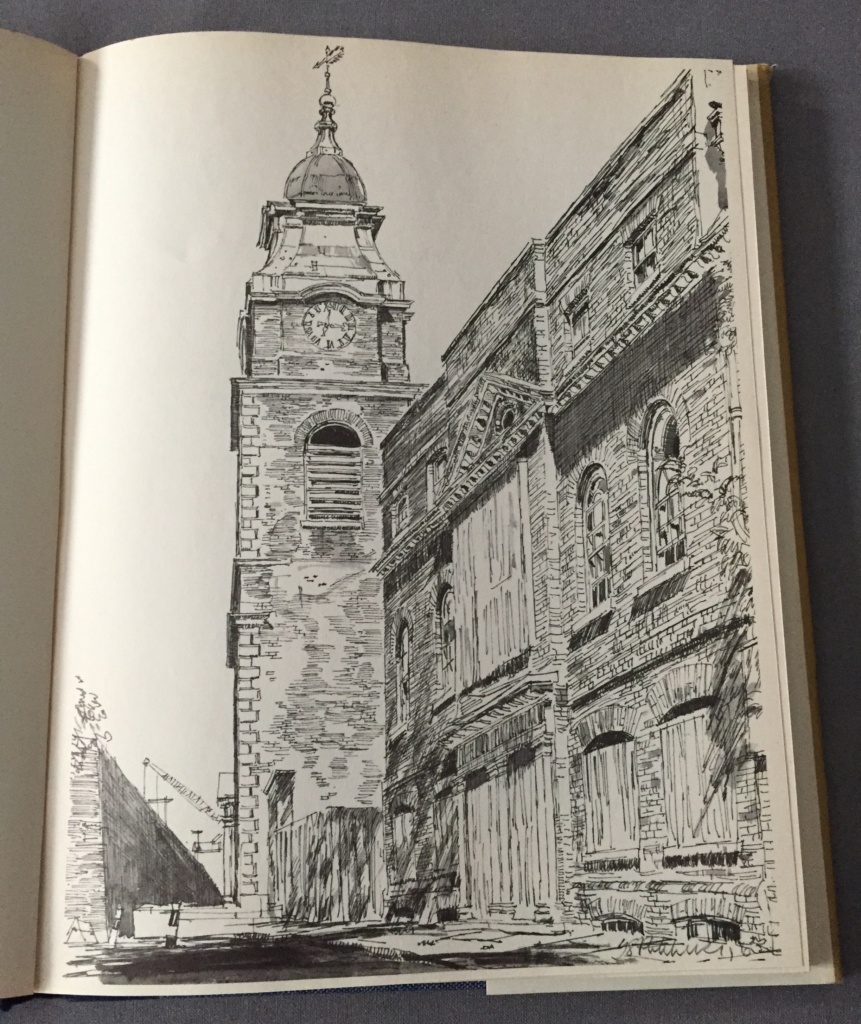
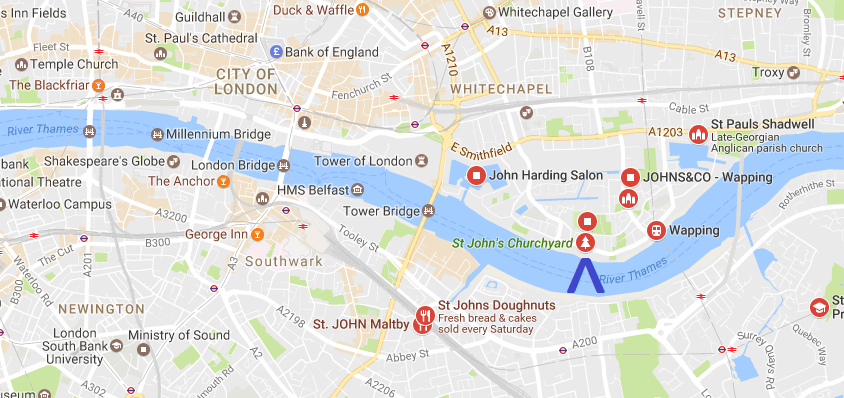
1 Comment
1 Pingback